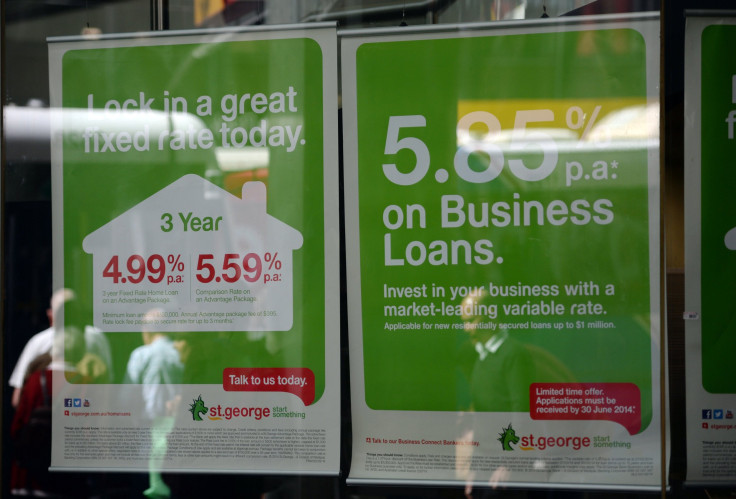Small Business Lending Picks Up 10 Years After Stock Market Crash

It wasn’t that long ago when even the most qualified small business owners had difficulty borrowing money from banks. When Lehman Brothers fell a decade ago and the Great Recession began, entrepreneurs had tremendous difficulty in securing capital. The spigot was turned off and banks, conservative by nature and reeling from the mortgage meltdown, narrowed their lending parameters.
Biz2Credit has been tracking business loan approval rates since January 2011, a period when America was in the midst of a so-called “credit crunch.” From May through October of 2011, less than one-in-ten small business loan applications were granted by big banks (assets of $10 billion+). The lowest point came in June 2011, when just 8.9 percent of funding requests were processed.
Fortunately, by 2012, these percentages rose above single digits and ever since, approval rates have continued to climb steadily. By October 2017, big banks were approving one-quarter of their loan applications, and the positive trend has continued during the past 12 months.
The Biz2Credit Small Business Lending Index™, released Oct. 9, found that 26.7 percent of the loan applications submitted to big banks were approved in September 2018. This new record high for the Index, which examines more than 1,000 credit applications made by small businesses via Biz2Credit’s online lending platform, occurred during a period in which the Federal Reserve consistently increased interest rates.
There are several reasons for this, most notably the robust economy. The strong dollar, surging stock market, and general optimism among small business owners bolster the robust lending atmosphere. With the economy roaring through the first two years of President Donald Trump’s term, consumer confidence is high. At the same time, the NFIB Small Business Optimism Index continued its historic 23-month positive trend, with a reading of 107.9 in September, the third highest reading in the survey's 45-year history.
The year 2018 has produced record high measures of job openings, hiring plans, job creation, compensation increases, profit growth, and inventory investment. The NFIB’s September 2018 survey showed that actual capital spending in the past few months rose significantly and that small business owners have bulked up inventories and hired more workers. In fact, the unemployment rate declined by 0.2 percentage points to 3.7 percent in September, according to The Bureau of Labor Statistics’ October 5 Jobs Report. The biggest job gains occurred in professional and business services, in health care, and in transportation and warehousing.
“This is the longest streak of small business optimism in history, evidence that tax cuts and regulatory rollbacks are paying off for the economy as a whole,” NFIB President and CEO Juanita D. Duggan said in a statement. “Our members say that business is booming and prospects continue to look bright.”
Of significant importance are the continuous rate hikes by the Federal Reserve. During much of the post-recession era, banks kept their lending rates artificially low, near zero, in fact. While small business borrowers obviously want the lowest rate possible, the incentive for banks to lend was removed. They simply didn’t make very much money by extending credit. With three interest rate increases imposed by the Fed this year, banks are charging more when they lend, and their spreads are up .
Further, demand has risen in the secondary market for small business loans. People are trying to borrow money now before the rates go up further. These are robust times in small business lending.
Smaller banks -- regional and community banks, specifically -- are approving roughly half (49.9 percent) of the funding requests they received in September, up one-tenth from August. It represents the highest figure for small banks in four years.
Small banks are processing record numbers of Small Business Administration loans. With a solid economy and the SBA’s government guarantees that mitigate lender risk, small banks are quite active in the small business lending marketplace. The loan guarantees encourage banks to provide capital to entrepreneurs who might not otherwise qualify for traditional small business loans either because of low credit scores or because they are relatively young firms with little payment history.
The increasingly better spreads and low default rates have led to greater activity from institutional investors, such as insurance companies, pension funds, and family funds. Years ago, these institutions were not very active in small business lending. They have become important players in the small business lending marketplace and in September granted 64.5 percent of loan requests.
Overall, I would say this positive lending atmosphere will last until interest rates go up another 50 to 75 basis points. Already we are seeing battles between President Trump and Federal Reserve Chairman Jerome Powell over the frequency of the Fed’s interest rate hikes. Trump blasted the Fed for being “out of control” and blamed the central bank for a slippage in the stock market last week.
Look for this to be a bone of contention for the coming months. Economic success will be the lynchpin of the president’s 2020 reelection campaign. The Fed had previously signaled the likelihood of yet another interest rate hike at the end of the year. If economic indicators slow down, look for more bluster from the White House.
2019 will be an interesting year in small business financing. The positive impact of the tax cuts may slow a bit, and if interest rates get too high, borrower demand may lessen. However, I do not see that happening until middle to late 2019.
Rohit Arora is co-founder and CEO of Biz2Credit, and has previously worked for Deloitte Consulting and Goldman Sachs. He holds a Master's degree in International Finance from Columbia University.
© Copyright IBTimes 2024. All rights reserved.





















